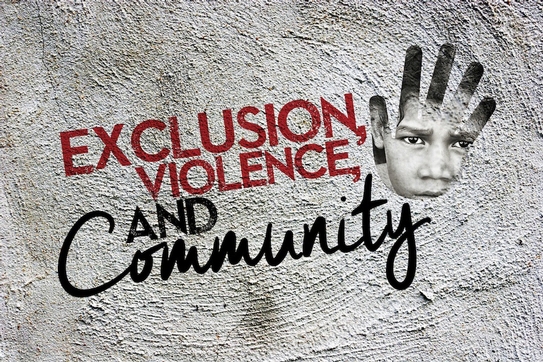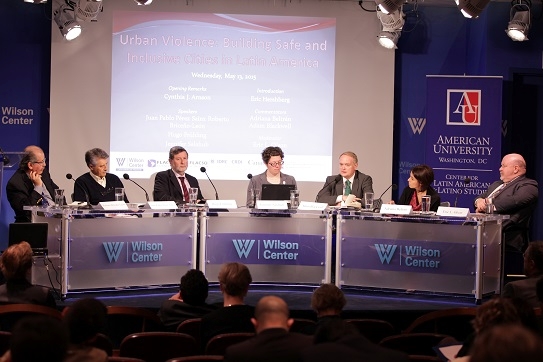You are here: American University Centers Latin American and Latino Studies Exclusion & Violence in Central American Cities

Rapid urbanization in Latin America is historically characterized by social inequality. At the same time, a belief in social mobility despite existing hierarchies provided a fundamental acceptance of the "order" of the status quo. But, 1980s-era structural adjustment programs throughout the region, which further inserted Latin American cities into global markets, significantly exacerbated processes of social exclusion and undermined expectations of social mobility. At present, increasing social exclusion feeds the growth of the informal economy, and in-migration to cities is rapidly expanding urban populations in ways exceeding the capacity of cities to absorb them. Social exclusion has now become a critical problem for the future of Latin American cities and is correlated with another major concern: pervasive violence.
Central American cities experienced heightened social exclusion and violence earlier than was typical elsewhere in Latin America (except for Costa Rica, which more closely followed the pattern above). Authoritarian Central American regimes that arose in the 1930s deepened this socio-economic polarization, eventually laying the groundwork for the violent civil wars of the 1980s. The structural adjustments following this period of civil conflict only served to intensify social processes of inequity, marginalization, exclusion, and violence. Attempts by Central American states to combat persistent violence, most often through the criminalization of violent actors, proved largely ineffective. At the same time, weak institutions and a lack of resources have resulted in the absence of the state in efforts to combat violence, too often increasing the vulnerability of marginal populations.
Project Objectives
FLACSO-Costa Rica has undertaken a multi-year program of research, application, and dissemination, in coordination with CLALS and FLACSO-El Salvador, to address why urban communities within Central America that are characterized by similar conditions of social exclusion face varying levels of violence. The team hypothesized that communities with greater organizational capacity also plan more effectively to reduce the probability of violence.
Five urban areas within Costa Rica and El Salvador, representing varying levels of violence and organization capacity, were selected as case studies. For each case study, the research team conducted focus groups, administered household surveys, and carried out in-depth interviews in select households and with key stakeholders. This initiative produced comparative reports at the national and regional levels, which were presented to each community participating in the case studies. Subsequent workshops within each community sought to identify the strengths and weaknesses of community action plans to reduce violence. Our intention has been for this process to serve as a model to be replicated in cities throughout the region. This project also convened sessions of dialogue with key policymakers to encourage state actors to reestablish control over areas left void of state control, to view communities as resources instead of victims, to highlight the link between social exclusion and violence, and to increase proximity between the community and institutional actors.

Project Updates
In May 2015, CLALS hosted eight guests from five countries to participate in two events at the Woodrow Wilson International Center for Scholars and the Washington Office on Latin America (WOLA), respectively. At these events, lead investigators from FLACSO discussed the findings of the Exclusion and Violence project. They were joined by two other Latin American scholars who have also been conducting complementary research through Safe and Inclusive Cities (SAIC), a global research program jointly funded by Canada’s International Development Research Centre and the U.K.’s Department for International Development.
On May 13, over 90 guests joined us (in-person and via live-streaming) for a panel discussion at the Wilson Center on “Policy Implications of Recent Research on Building Safe and Inclusive Cities in Latin America.” Principal investigator Juan Pablo Pérez Sáinz presented policy-oriented findings from the Costa Rican and Salvadoran studies (see the video and photos of the event). Adam Blackwell, Secretary for Multidimensional Security at the Organization of American States, and Adriana Beltrán, Senior Associate for Citizen Security at WOLA, served as commentators. Guests at the Wilson event included representatives from the Embassies of El Salvador, Costa Rica, Guatemala, and Nicaragua, as well as from USAID and the Department of State.
On May 14, WOLA hosted a more scholarly-oriented discussion during which Rodolfo Calderón from FLACSO-Costa Rica and Larissa Briosso from FLACSO-El Salvador elaborated on conceptual and methodological approaches for studying social exclusion in marginalized urban communities (see the video of the event). SIS Professor and CLALS Faculty affiliate Daniel Esser moderated the discussion, with representatives from embassies and local think tanks in attendance.
In addition to inviting our FLACSO partners from El Salvador and Costa Rica, CLALS hosted Professors Hugo Frühling (Universidad de Chile) and Roberto Briceño-León (Laboratorio de Ciencias Sociales, Venezuela). Frühling is currently concluding a comparative study of Bogotá, Lima, and Santiago that focuses on violence in vulnerable neighborhoods of cities that are otherwise experiencing economic growth and improved prosperity. Briceño-León leads a team of researchers in Caracas, Venezuela whose work examines the role of institutions in dealing with poverty, inequality, and violence.
The Center's Working Paper "Violence and Community Capabilities: Insights for Building Safe and Inclusive Cities in Latin America" summarizes the findings of the Costa Rican and Salvadoran studies for broader distribution to U.S. policymakers and practitioners.
